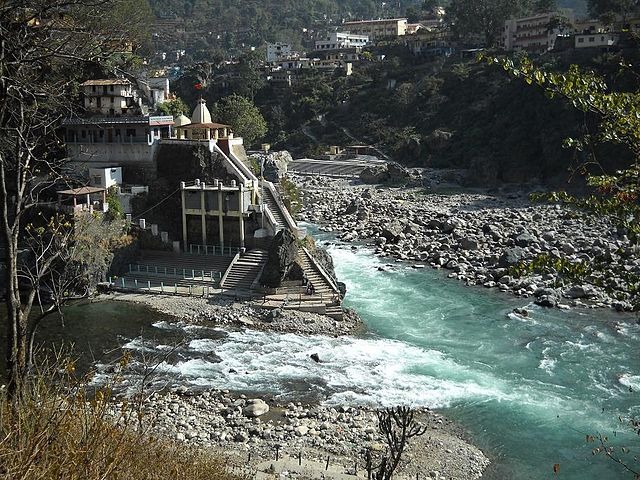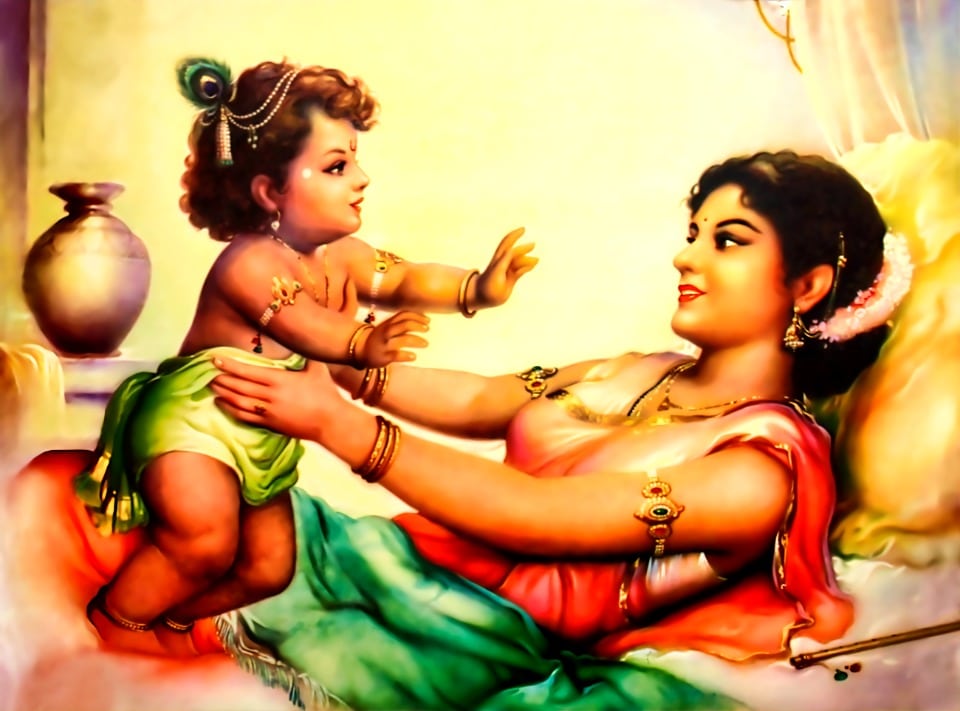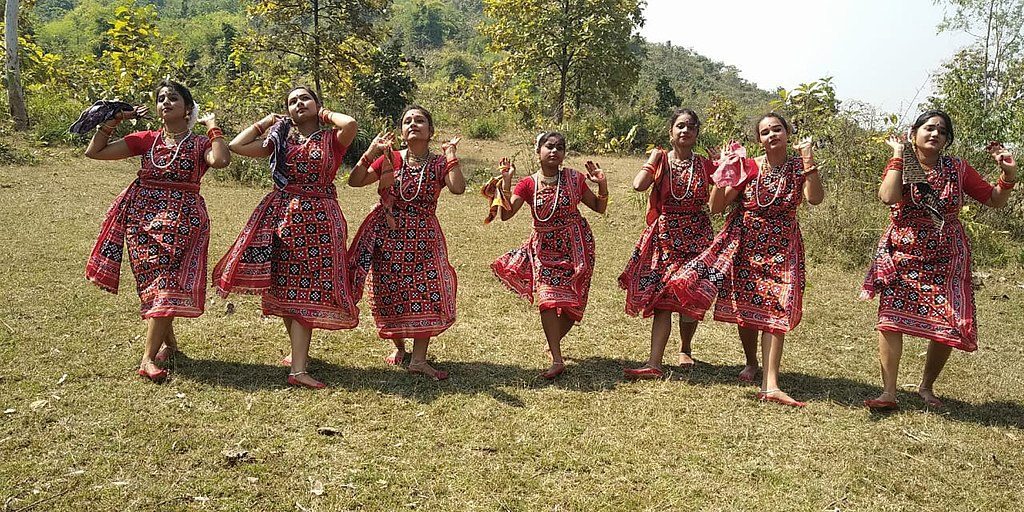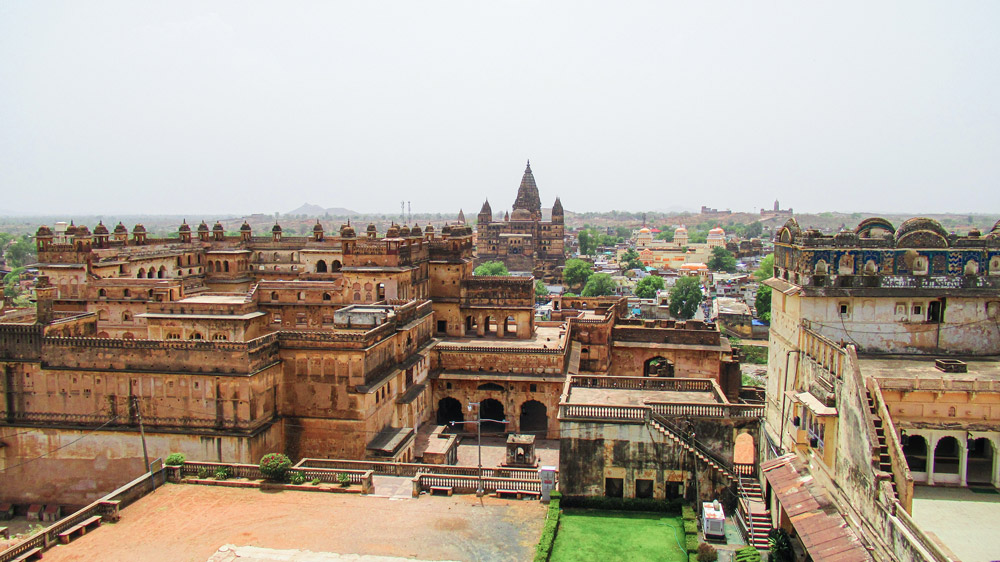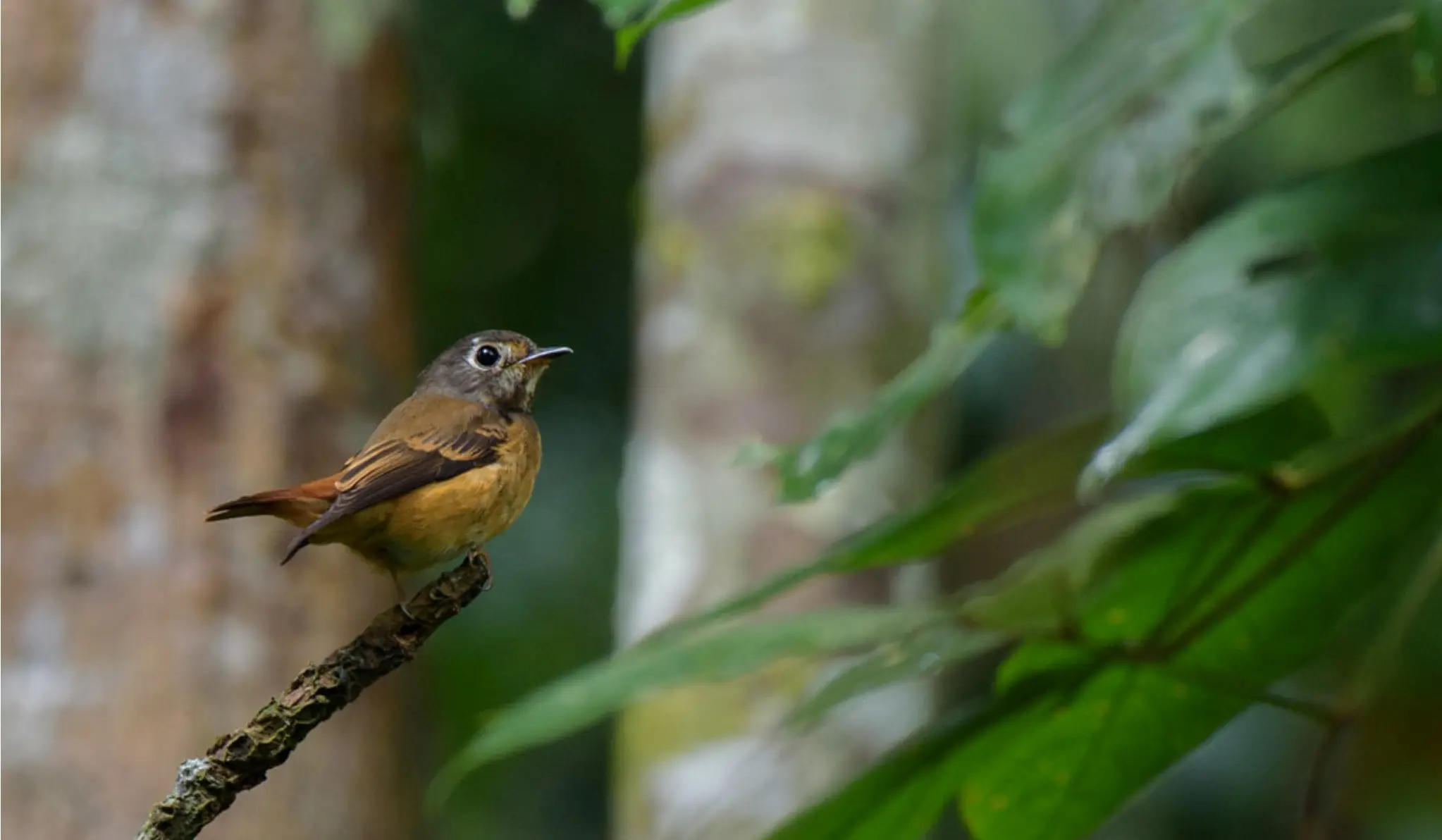Uttarakhand has historically been known as “Dev Bhoomi” (the land of the gods) for good reason. Many of Hinduism’s most important shrines lie within the state, tucked away in the towering mountains and along its mighty rivers. One of the most sacred of these is when India’s largest river Ganga meets its tributaries on its foaming path down to the plains at five different sites called Panch Prayag. The Ganges is the holiest river in India, and it is believed that it purifies the soul of all its sins. Thus, the confluences of the Ganges with its tributaries are worshipped as the spiritual places of divine salvation, otherwise called “Prayag”. It is believed that a dip at the confluence cleanses the heart, mind, and soul of a person and inches him closer to liberation, or mukti.
While planning your Panch Prayag journey, you can complete your Chota Char Dham yatra. Savaari offers an exclusive Char Dham Yatra package for pilgrims seeking to cover one, two, or all four dhams – Yamunotri, Gangotri, Kedarnath, and Badrinath. You can book comfortable Toyota Innova cabs or sedans from cities like Delhi, Dehradun, Haridwar, and Rishikesh based on your travel needs and darshan duration to cover any sacred shrine of your choice. Our Char Dham Yatra package price is flexible and you can book a roundtrip cab service for a comfortable journey and peaceful darshan. Ready to travel to the holy shrine? Book a Savaari cab today!

A mythological tale that explains Panch Prayag’s complex interconnecting rivers
According to Hindu mythology, Goddess Ganga wanted to descend to Earth and bless humankind, but her power was too much for Earth to handle. Lord Shiva, knowing this, decided to split her energy and distribute it equally across the lands. He took her energy into his matted locks and directed it to flow into Earth in twelve channels. These channels are said to rejoin after Devprayag, the last of the Panch Prayag that birthed the holy Ganga river. As a result, the Devprayag is considered the most important of the Panch Prayag.
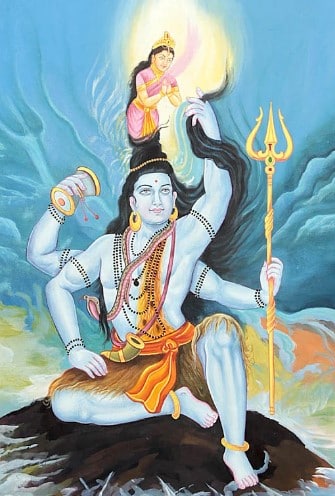
The Satopanth, Bhagirathi, Alaknanda, Vishnuganga, Dhauliganga, Nandakini, Pindar, and Mandakini meet at different points along the path and finally form the Ganga at the holy site of Devprayag. It is also deduced that the Panch Prayag located on the road to Badrinath refers to the Swargarohana (ascend to heaven) route followed by the Pandavas to attain salvation after they completed the circumambulation of the earth. There are various other mythology, histories, and stories associated with each of the Prayags that we will explore in this article.

Visit the five Prayags – A handy travel guide for a roadtrip
To go on this sacred journey, one needs to reach Rishikesh (or Haridwar), and from there, one can book a reliable taxi and continue the journey by road. The Panch Prayag road trip starts at Vishnuprayag, then goes to Nandaprayag, Karnprayag, Rudraprayag, and, at last, Devprayag. Vishnuprayag is around 265 km from Rishikesh; Nandaprayag is 190 km; Karnprayag is around 170 km; Rudraprayag is almost 140 km; and Devprayag is 69 km from Rishikesh.
The Panch Prayag lies in one of the high mountains of the Himalayas with low temperatures all through the year; hence, our expert Savaari drivers from Rishikesh, Haridwar and Dehradun recommend avoiding the winter as it gets very cold during the winter season. The best time to embark on a Panch Prayag road trip is from May to June. During the summer season, the roads remain in very good condition and the weather remains quite pleasant. Avoid the monsoon months because they are not ideal for the Panch Prayag road trip. If you are planning to visit these Prayags with your family, we recommend booking a one-way cab to save money on your total budget. If you are travelling with a group, we recommend booking an affordable tempo traveller from Delhi or Dehradun, because, with spiritual explorations like these, having a close-knit group elevates the experience.
The Panch Prayags and their significance
The Panch Prayag of Uttarakhand traces the route carved by the Alaknanda River when it leaves its Himalayan abode at the Satopanth glacier. It is joined by the Dhauliganga River at Vishnuprayag, near Joshimath. Nandaprayag is the second confluence in the cascading sequence, where the Alaknanda River is joined by the Nandakini River.
The third confluence of the Alaknanda River is at Karnaprayag, where the Pindar River joins the Alaknanda. Rudraprayag is the fourth confluence between the Alaknanda and Mandakini rivers. The fifth and final union takes place at Devprayag, where the Alaknanda River joins the Bhagirathi to form the river Ganges, which flows down to the plains. Although these five places, in descending order of river convergence, are Vishnuprayag, Nandaprayag, Karnaprayag, Rudraprayag, and Devprayag, our driver recommends starting the Panch Prayag tour from Rishikesh and travelling to Devprayag, Rudraprayag, Karnaprayag, Nandaprayag, and then Vishnuprayag. Here’s a suggested itinerary and Panch Prayag map that includes the best routes, attractions to visit, and Panch Prayag tricks for making the most of a Panch Prayag road trip.
1. Dev Prayag – the revered land of gods
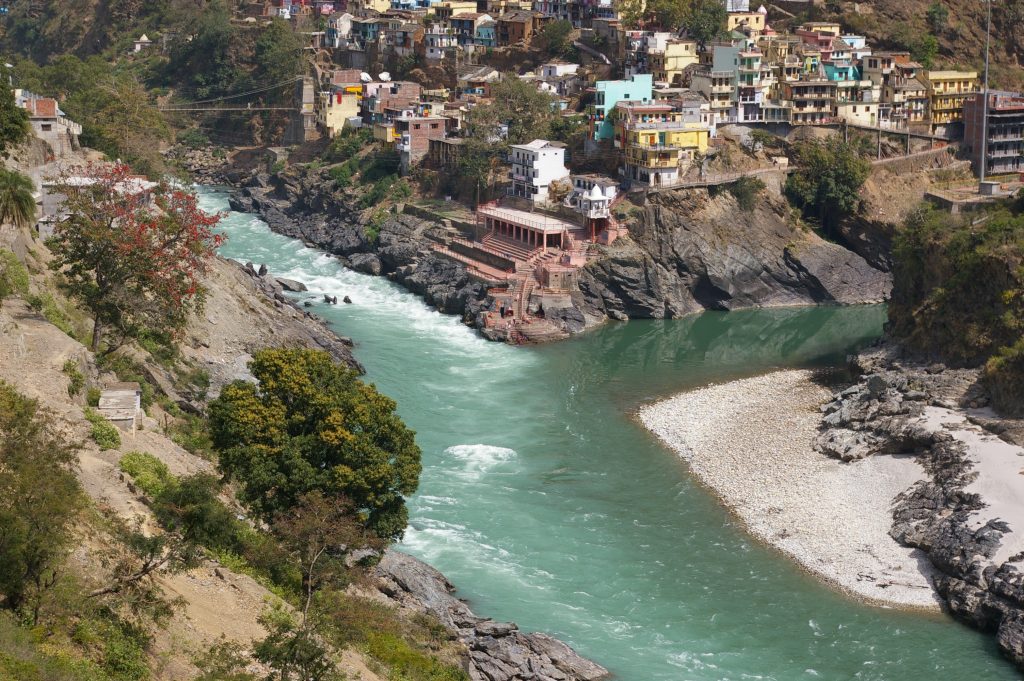
Located 72 km from Rishikesh, Devprayag is the most significant confluence in Panch Prayag. It is a location where the River Alaknanda meets Bhagirathi after coming down from Vishnuprayag, Nandprayag, Karnaprayag, and Rudraprayag to form the sacred River Ganga. Devprayag is a place where the River Ganga comes to life. Lord Laxman and Lord Ram, according to popular belief, performed intense penance there. This was done to express their remorse for Brahmahatya of Ravana, who was Brahman. Devotees take a bath and pray here and at other Panch Prayags before continuing their journey to Chota Chardham. The entire town was destroyed in the earthquake in 1803 and was restored soon.
Apart from the holy Sangam, the major attraction here is Raghunath Temple. It is supposed to be one of the oldest temples of Lord Ram. The temple is right at the confluence. Our driver recommends visiting the Chandrabadani Temple, dedicated to Goddess Sati, about 20 km away from Devprayag. It is believed that the torso of the goddess Sati fell here, along with her weapons. The weapons are scattered all over the place here. This temple is situated at a height of 2277 meters above sea level. It also gives a panoramic view of the Garhwal Hills and the Kedarnath, Badrinath, and Surkanda peaks.
2. Rudra Prayag: The misty abode of Shiva
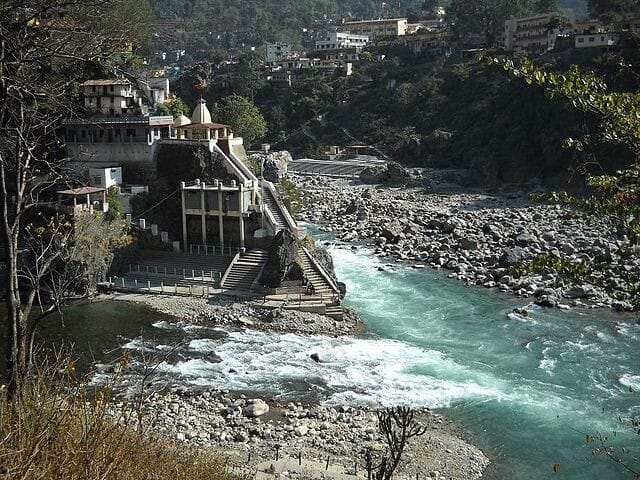
Located 66 km from Devprayag, Rudraprayag is a gorgeous town at the confluence of the Mandakini and Alaknanda rivers. This little pilgrim village is named after Lord Shiva’s angry form, known as Rudra. It is the second of the Panch Prayags. The merging of two rivers reflects the beauty of each and appears to be a sister’s union. A widely accepted belief is that Lord Shiva once performed Tandav at this place. Rudraprayag was previously part of the Chamoli and Tehri districts. However, in 1997, Tehri, Pauri, and Kedarnath Valley joined forces to establish Rudraprayag as a district.
On our way to Rudra Prayag, our driver shared with us an extremely vital piece of information. He said that, in order to master the mysteries of music, Narad Muni worshipped Lord Shiva, who appeared in his Rudra Avatar to bless him. On his suggestion, we went to the Narad Shila, a black rock where Narad Muni is said to have meditated. We wouldn’t have heard about it if it hadn’t been for him, so we’re grateful for his recommendation, which led us to view a treasured piece of mythology.
– Rakshit Sharma
Rudraprayag is a haven for adventurers, nature lovers, solo travelers, and, of course, devoted worshippers. This district in Uttarakhand’s Garhwal region is also a great place to see basic and humble rural life. It truly embodies the beauty and humility of the state’s culture. The famed Hindu pilgrimage site of Kedarnath is located in the Rudraprayag area, adding to the divine aura.
3. Karnaprayag – Where Surya granted Karna a boon
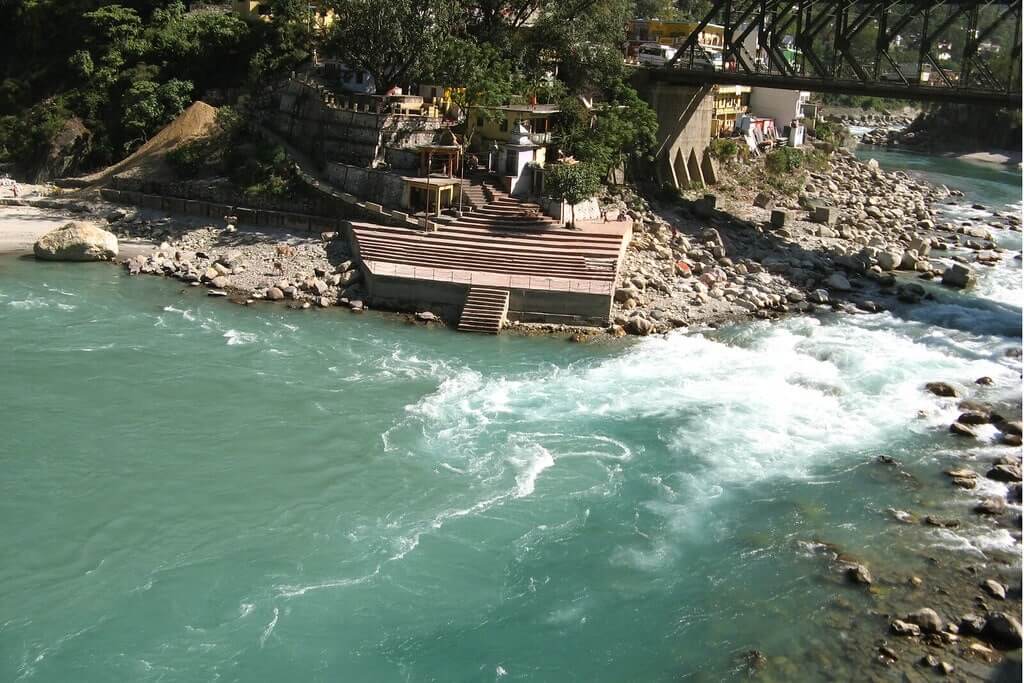
Karnaprayag, located 33 km from Rudraprayag, is named after Karna, a Mahabharata hero. It is said that Karna meditated here for his father, Lord Surya. He did that for many years to acquire the impregnable shield, which made him a formidable warrior on the battlefield. It is also the location where Lord Krishna performed Karna’s last rites. Swami Vivekananda meditated for 18 days at this beautiful and tranquil location. The relationship between Shakuntala and Dushyant bloomed here, according to Kalidas’ Abhijnana-Shakuntalam.
[Also Read: Things to do in Rishikesh – A complete travel guide for the adventurer]
4. Nandaprayag – Where tales and peans of Krishna are sung
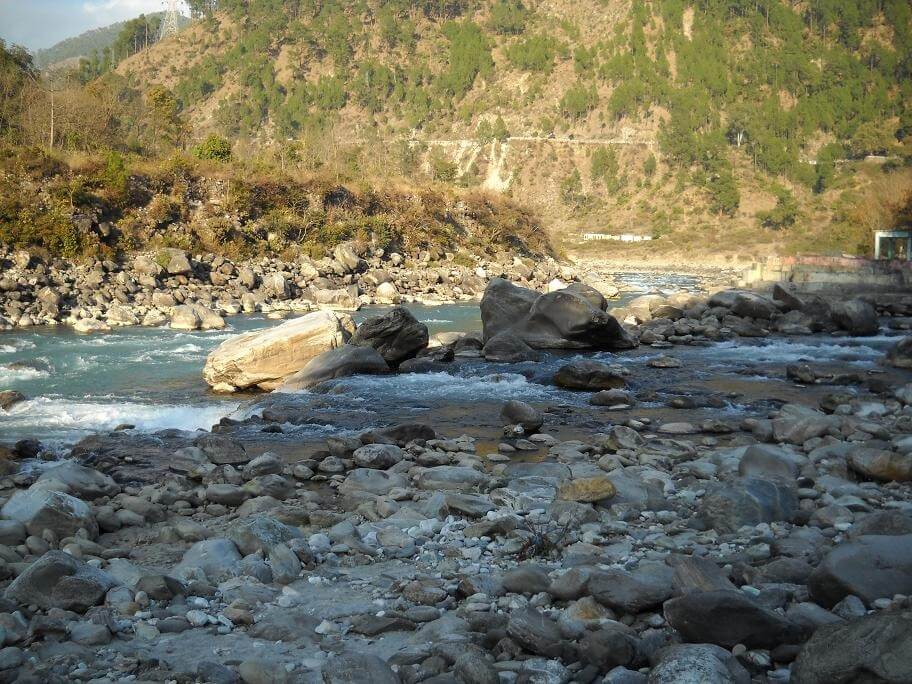
Located 69 km from Karnaprayag, Nandaprayag is the second confluence site with the Alaknanda. The Alaknanda and Nandakini rivers meet at a height of 1,358 metres in Uttarakhand’s Chamoli district. According to legend, this location was named after Yadava King Nanda. His devotion to Lord Vishnu at this location bestowed upon him the blessing of having Krishna, a child-like Lord Vishnu, as his foster father. Vishnu granted the boon of the birth of a son to Nanda and his wife Yashoda, and also the same boon to Devaki, wife of Vasudeva. Placed in a dilemma since both were his disciples, he ensured that Krishna, an incarnation of Vishnu, was born to Devaki and Vasudeva but fostered by Yashoda and Nanda. There is a temple for Gopal, a form of Krishna, here.
Nandaprayag is located 194 kilometers from Rishikesh and 22 kilometers from Karnaprayag. It is also reported to be the location of King Dushyant and Shakuntala’s wedding. Nandaprayag is also a gateway to Badri-kshetra, which is located between Satopanth and Nandaprayag. For all its religious importance, Nandaprayag is much more than that, as it is a place of unadulterated natural beauty.
5. Vishnuprayag – The gateway to Badrinath
Located 69 km from Nandaprayag, Vishnuprayag is the confluence of the streams of the Satopanth and Bhagirath Kharak glaciers, the River Alaknanda, and the Dhauliganga River, which flows down from Niti Valley. Alaknanda was previously known as Vishnu Ganga. The Alaknanda River runs in front of Lord Vishnu’s sacred temple in Badrinath. The confluence occurs at a height of 1,372 meters in Uttarakhand’s Chamoli district, near Joshimath. It is also said that this is where sage Narada meditated to worship Lord Vishnu. Apart from its religious significance, the location is well known among adventurers for its walking trails. A Vishnu temple is located near the confluence that is dated to the 19th century. Its construction is credited to the Maharani of Indore, Ahalyabai.
[Also Read: Char Dham Yatra route guide]
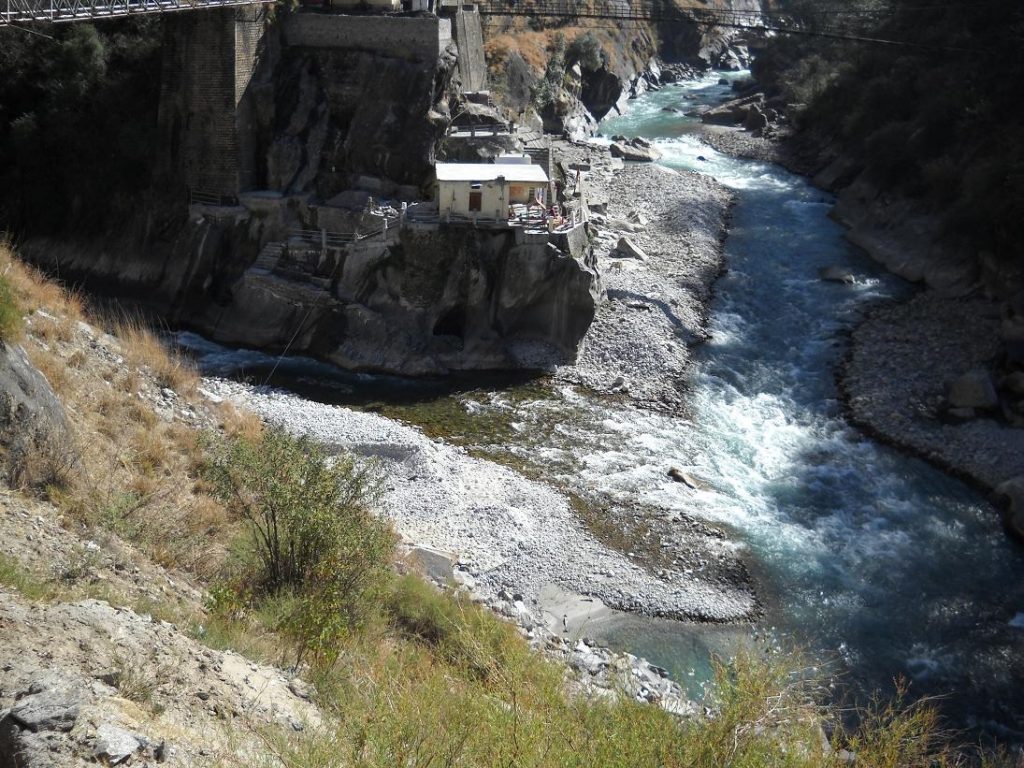
A stairway from this temple leads to the confluence spot. Most of the pilgrims take a dip in the nearby Vishnu Kund before entering the temple. Our driver recommends starting your day at Vishnuprayag with the Vishnuprayag Temple, followed by the Vishnu Kund on your Panch Prayag road trip. Visit Hanuman Chatti in the late afternoon. You can alternatively keep the afternoon for river rafting, another experience not to be missed while here. He also recommends trying out some amazing Garhwali and Kumauni cuisines, such as aloo ke gutke, gahat, chainsoo, and kaapa.
Everywhere I looked on the internet, it was suggested that I begin my Prayag yatra with the very first Prayag, Vishnuprayag, and then go to the remaining Prayags in descending order. However, because Vishnuprayag is so far away from where I started my Prayag Yatra, the journey looked practically impossible to complete. My driver suggested starting with Dev Prayag and then moving on to the other Prayags, which turned out to be extremely convenient for me to cover.
– Meenakshi Nair
Shrouded in myths, religion, and mysticism, all five of these prayags are considered equally sacred. People of Garhwal, in particular, gather at the five Prayags during Makar Sankranti, Uttarayan, Basant Panchami and Ram Navami festivals for a holy dip in the sacred river confluences. The most convenient way to travel to these sites is to rent a car from Dehradun so that on your way back, the only thing on your mind is all the spiritual memories you’re going to carry throughout your life.
[Also Read: Things to do in Mukteshwar – Spirituality amidst nature]
Last Updated on May 22, 2024 by V Subhadra
